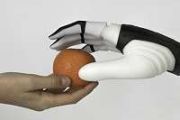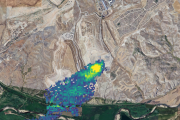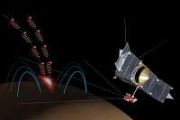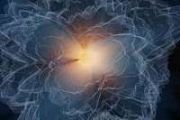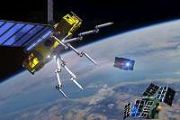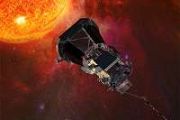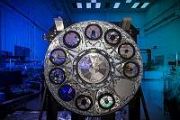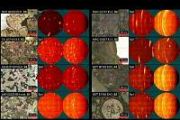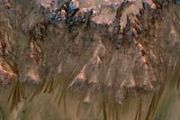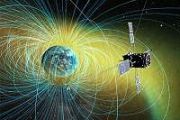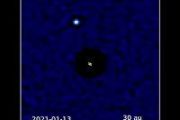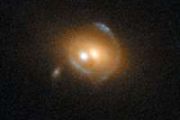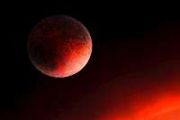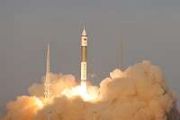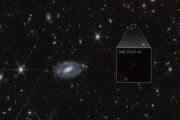
Copernical Team
Researchers propose new method to measure cosmic expansion
 In 1929, astronomers discovered that galaxies are streaming away from us and each other. They interpreted this observation that the universe is expanding. However, when they measured how fast it is expanding, they got different answers using different methods. The difference continues to be a thorn in their description of the expanding universe.
A team of researchers led by Souvik Jana at
In 1929, astronomers discovered that galaxies are streaming away from us and each other. They interpreted this observation that the universe is expanding. However, when they measured how fast it is expanding, they got different answers using different methods. The difference continues to be a thorn in their description of the expanding universe.
A team of researchers led by Souvik Jana at Astronomers witness energetic switch on of black hole
 A team of astronomers led by researchers from the University of Birmingham, University College London and Queen's University Belfast have discovered one of the most dramatic 'switches on' of a black hole ever seen. They will present their findings, Tuesday 4 July, at the 2023 National Astronomy Meeting in Cardiff. The work will also be published in Monthly Notices of the Royal Astronomical Socie
A team of astronomers led by researchers from the University of Birmingham, University College London and Queen's University Belfast have discovered one of the most dramatic 'switches on' of a black hole ever seen. They will present their findings, Tuesday 4 July, at the 2023 National Astronomy Meeting in Cardiff. The work will also be published in Monthly Notices of the Royal Astronomical Socie Solving the RIME deployment mystery
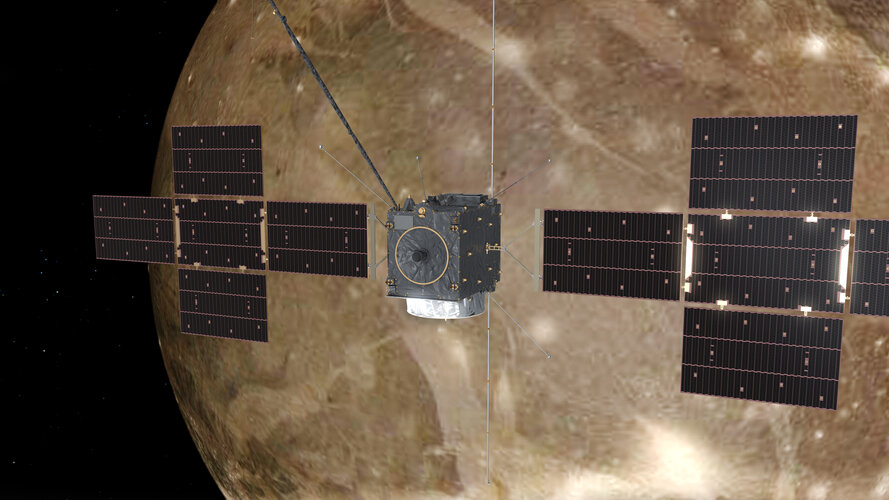
When the RIME antenna on ESA’s Juice mission failed to deploy a few days after launch, the engineering teams faced the mighty challenge to understand the fault and rectify it. At stake was a chance to see inside Jupiter’s mysterious icy moons.
Secrets of pearl harnessed for stronger space structures

Pearls and seashells are made from the same basic stuff as easily crushed chalk – humble calcium carbonate – so why are they so much tougher? Researchers are taking design tips from the micro-structure of these naturally formed materials to produce stronger, more fracture-resistant ceramics for future space missions.
Radio telescope observations confirm unintended radiation from large satellite constellations
 Scientists use the LOFAR telescope to observe low-frequency radio waves from satellites in large constellations for the first time. "Unintended electromagnetic radiation" emanating from onboard electronics in Starlink satellites was detected which could impact astronomical research. Further study is now ongoing.
For a study published in the Astronomy and Astrophysics journal, scientists fr
Scientists use the LOFAR telescope to observe low-frequency radio waves from satellites in large constellations for the first time. "Unintended electromagnetic radiation" emanating from onboard electronics in Starlink satellites was detected which could impact astronomical research. Further study is now ongoing.
For a study published in the Astronomy and Astrophysics journal, scientists fr Webb locates dust reservoirs in two supernovae
 Researchers using NASA's James Webb Space Telescope have made major strides in confirming the source of dust in early galaxies. Observations of two Type II supernovae, Supernova 2004et (SN 2004et) and Supernova 2017eaw (SN 2017eaw), have revealed large amounts of dust within the ejecta of each of these objects. The mass found by researchers supports the theory that supernovae played a key role i
Researchers using NASA's James Webb Space Telescope have made major strides in confirming the source of dust in early galaxies. Observations of two Type II supernovae, Supernova 2004et (SN 2004et) and Supernova 2017eaw (SN 2017eaw), have revealed large amounts of dust within the ejecta of each of these objects. The mass found by researchers supports the theory that supernovae played a key role i Earth's day was a constant 19.5 hours for over a billion years
 A team of astrophysicists at the University of Toronto (U of T) has revealed how the slow and steady lengthening of Earth's day caused by the tidal pull of the moon was halted for over a billion years.
They show that from approximately two billion years ago until 600 million years ago, an atmospheric tide driven by the sun countered the effect of the moon, keeping Earth's rotational rate s
A team of astrophysicists at the University of Toronto (U of T) has revealed how the slow and steady lengthening of Earth's day caused by the tidal pull of the moon was halted for over a billion years.
They show that from approximately two billion years ago until 600 million years ago, an atmospheric tide driven by the sun countered the effect of the moon, keeping Earth's rotational rate s iQPS initiates a full-scale study to leverage SkyCompass-1 optical data relay service
 Institute for Q-shu Pioneers of Space, Inc. (iQPS) and Space Compass Corporation (Space Compass) announced that iQPS will initiate a full-scale study to leverage "SkyCompass-1" high-capacity Optical Data Relay Service provided by Space Compass and Skyloom Global Corporation (Skyloom) for iQPS's SAR satellites.
iQPS has successfully accomplished the development of a compact, high-resolution
Institute for Q-shu Pioneers of Space, Inc. (iQPS) and Space Compass Corporation (Space Compass) announced that iQPS will initiate a full-scale study to leverage "SkyCompass-1" high-capacity Optical Data Relay Service provided by Space Compass and Skyloom Global Corporation (Skyloom) for iQPS's SAR satellites.
iQPS has successfully accomplished the development of a compact, high-resolution ITU Radio Regulations Board approves waiver for Rivada LEO constellation
 Rivada Space Networks reports that the ITU's Radio Regulations Board has waived the requirement that Rivada put 10% of its constellation into orbit this year.
The ITU waiver process seeks clear evidence of funding, manufacturing and launch contracts as well as coordination with other systems. Having reviewed the submission made by Liechtenstein's telecommunications regulator and filing adm
Rivada Space Networks reports that the ITU's Radio Regulations Board has waived the requirement that Rivada put 10% of its constellation into orbit this year.
The ITU waiver process seeks clear evidence of funding, manufacturing and launch contracts as well as coordination with other systems. Having reviewed the submission made by Liechtenstein's telecommunications regulator and filing adm Preventing interplanetary pollution that could pose a threat to life on Earth and other planets
 Formulating policies for planetary protection issues and keeping them up-to-date is the responsibility of the Committee on Space Research (COSPAR) panel on planetary protection. In an article in Frontiers in Astronomy and Space Sciences, an international group of experts affiliated with COSPAR reviewed the panel's role, and its Planetary Protection Policy, including recent considerations regardi
Formulating policies for planetary protection issues and keeping them up-to-date is the responsibility of the Committee on Space Research (COSPAR) panel on planetary protection. In an article in Frontiers in Astronomy and Space Sciences, an international group of experts affiliated with COSPAR reviewed the panel's role, and its Planetary Protection Policy, including recent considerations regardi 








